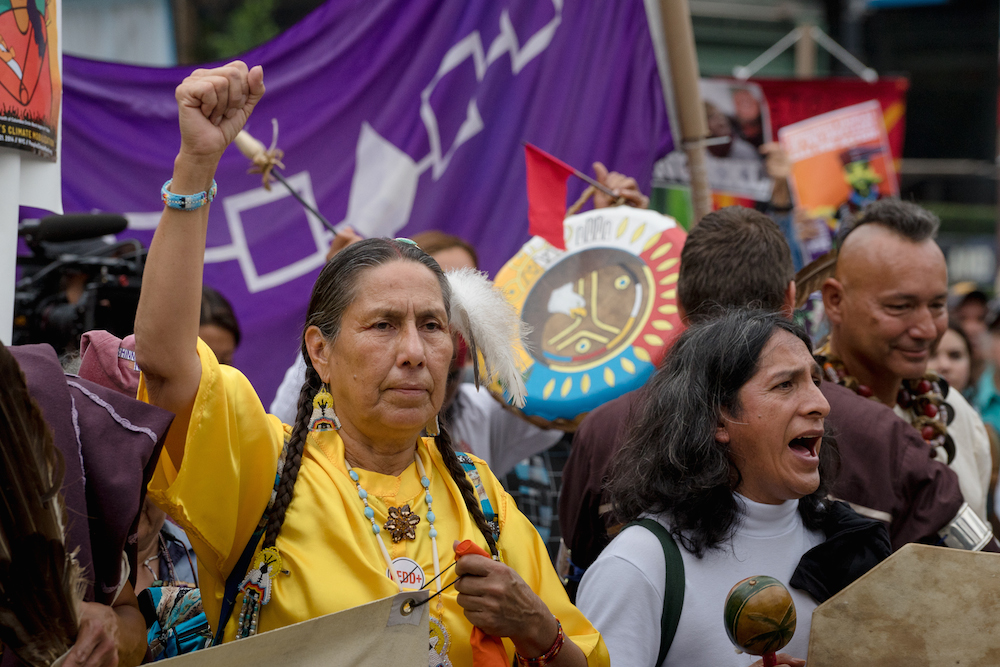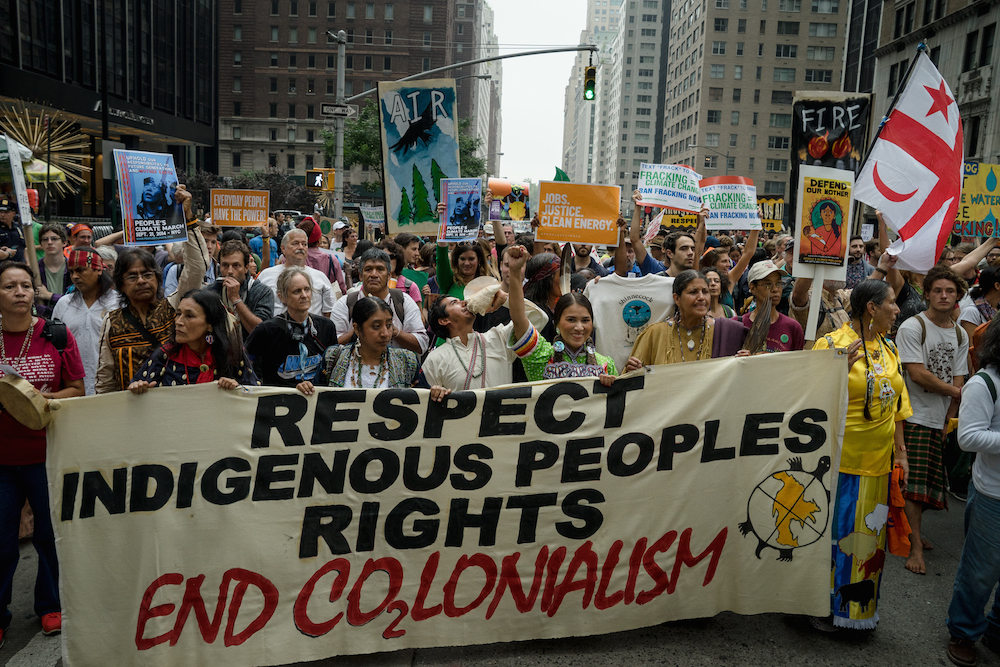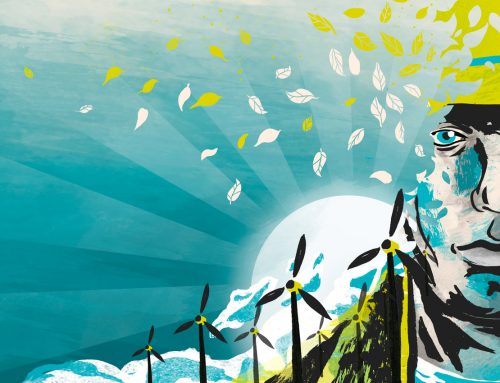How can Indigenous peoples bring environmental sustainability and social justice issues together into a single transformative movement?

Idle No More activists at the Peoples Climate March 2014 Photo by Allan Lisner
It all started in 2012 when four Canadian women (primarily Indigenous) wanted to protest against federal legislation which threatened protection of traditional lands and waters. They felt as if conventional negotiation tactics were not resulting in meaningful action. The group began thinking of alternative ways to rally around a common cause, assert their rights, and fight for their land.
The result was Idle No More, a grassroots movement which aims to facilitate the empowerment and activism of First Nations communities across Canada. The two main goals of the movement are indigenous sovereignty and the environmental protection of traditional lands and waters. This movement is generated from a broader context of indigenous resistance and a culture of land stewardship that has been going on for centuries in North America.
The group organizes heavily on social media sites and facilitates teach-ins and rallies to bring people together and educate them about Indigenous rights and resistance pathways. Protest actions have included hunger strikes, rallies, traffic slowdowns, flash mob round dances, traditional fasts, national protests, benefit concerts, myth-busting exercises, and extensive community outreach. Since its creation, Idle No More has grown to include many other issues that affect indigenous communities across the country such as access to housing and violence against indigenous women.
Idle No More supports many events across the country such as The Great Lakes Gathering 2016, which will be hosted on the shores of Lake Huron where Indigenous community members and allies will meet and hold ceremony. The aim of the event will be to discuss the health and wellness of the Great Lakes and plan actions to protect and preserve them. The event will also include traditional activities such as storytelling and language immersion.
“Idle No More calls on all people to join in a peaceful revolution, to honour indigenous sovereignty, and to protect the land and water.” –The Idle No More vision
Within this movement, social justice and ecological conservation are intimately tied. In a recent article in Yes Magazine, Idle No More activist and Indigenous scholar Leanne Simpson said that members are, “…talking about a massive transformation, a massive decolonization. A resurgence of indigenous political thought that is very, very much land-based and very, very much tied to that intimate and close relationship to the land, which to me means a revitalization of sustainable local indigenous economies that benefit local people.”
The group goes further than just protesting individual development projects: it challenges a paradigm of extractivism and the suppression of indigenous ways of knowing. An assumption of the Idle No More movement is that environmental destruction and violation of indigenous rights are linked through a history of colonialist-capitalist environmental injustice. It does not draw a line between environmental quality and human well-being. It protests the status quo and posits an alternative relationship between people and nature – one based on respect, reciprocity, and the considerations of future generations. This relationship is based on ancient tradition and it also reflects innovative thinking for recent times.
The organization is a platform for diverse communities across Canada to find themselves in a wider movement. While the different tribes represent different languages, regions, and cultural practices, what binds them together is their common struggle –their fight for rights and the protection of their traditional territories. Their social media platform allows their message to be accessible throughout the world, creating a potentially global impact.
Considering the history of Aboriginal peoples’ struggle for justice, it is safe to say the Idle No More is no “flash in the pan”; this movement’s great strength is that it has deep roots and a collective sense of injustice, centuries in the making.

Peoples Climate March 2014 Photo by Allan Lisner

March for Real Climate Leadership 2015 Photo by Thunder Currier
Cover photo: Peoples Climate March 2014 Photo by Allan Lisner
Idle No More, rapidly spread across Canada, and has be taken as an inspiration in other other countries. It remains to be seen whether it results in deeper value change, or promote similar movements in other places.



